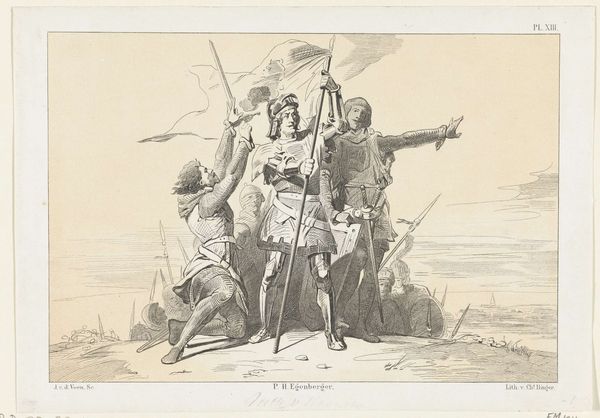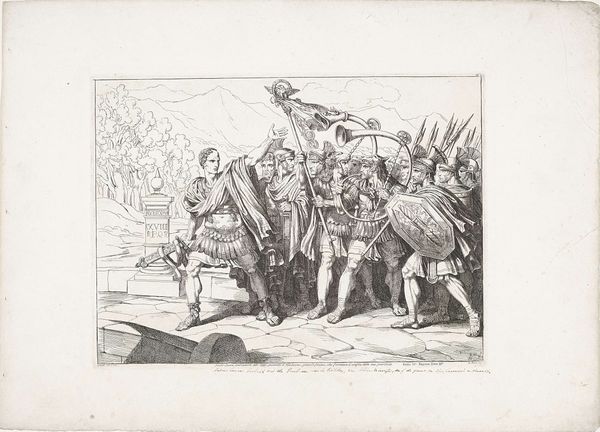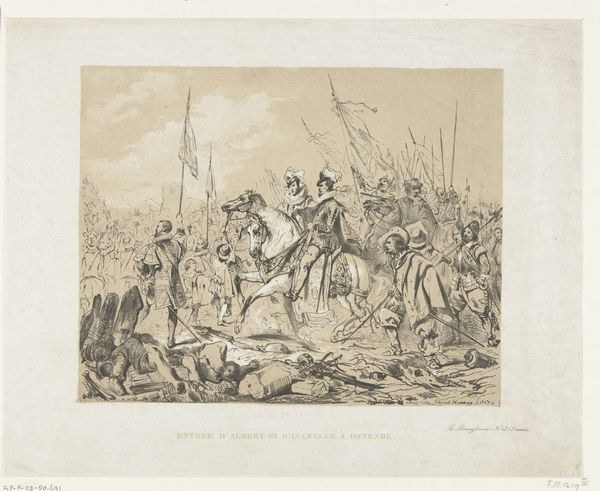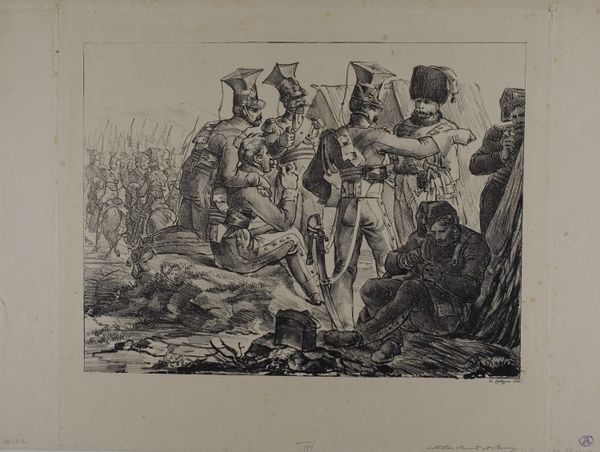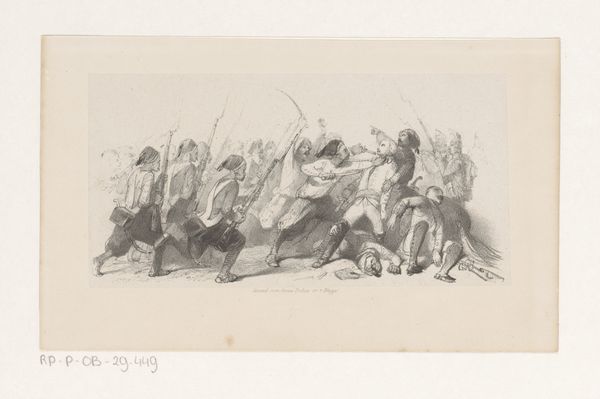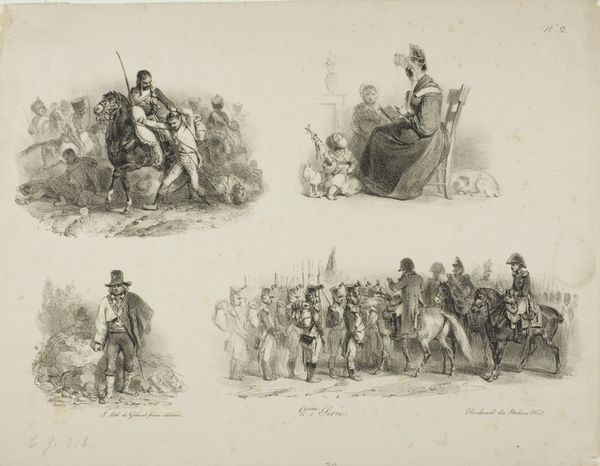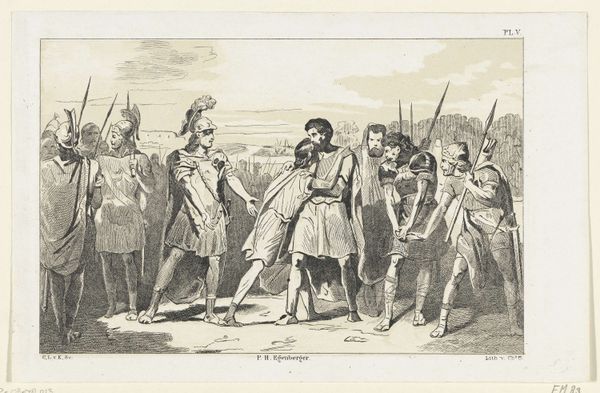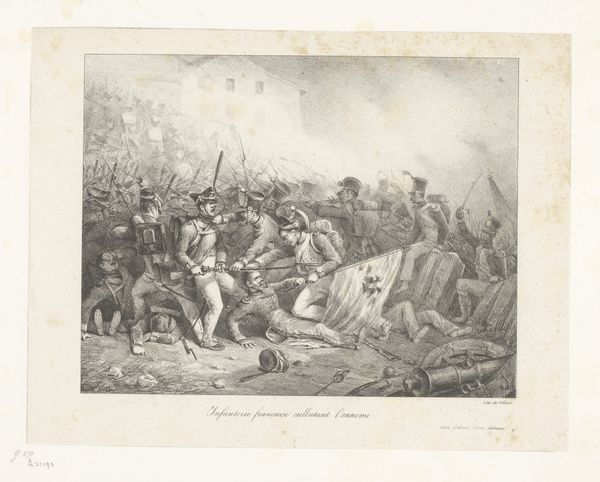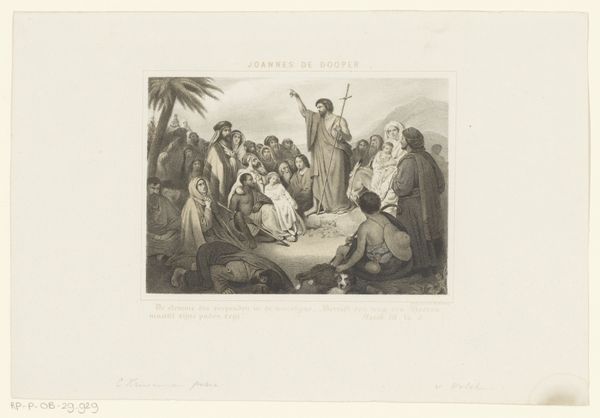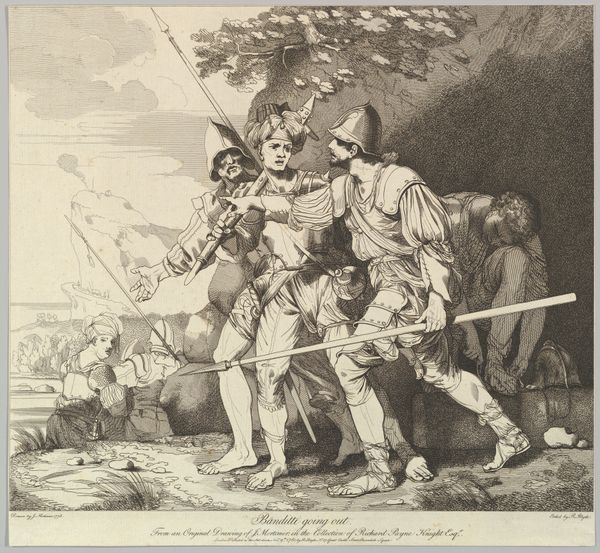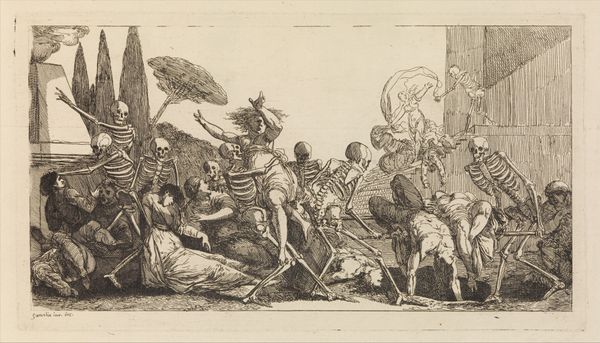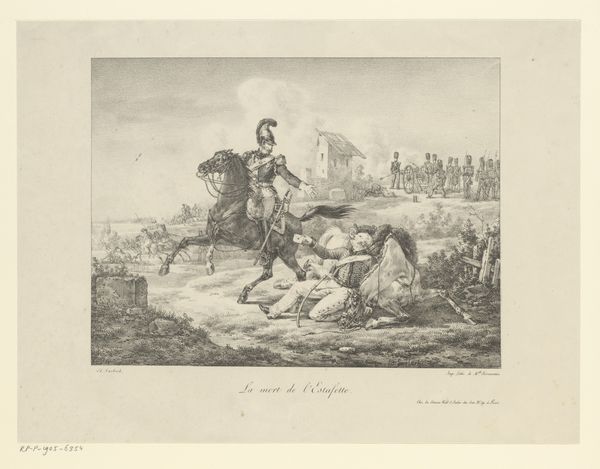
Hertog Eduard van Gelre vermoord door Herman Bier, 1371 1853 - 1855
0:00
0:00
Dimensions: height 161 mm, width 233 mm
Copyright: Rijks Museum: Open Domain
Curator: Let’s turn our attention to "Hertog Eduard van Gelre vermoord door Herman Bier, 1371," an engraving made between 1853 and 1855 by Jan van der Veen, currently held here at the Rijksmuseum. Editor: My initial impression is one of organized chaos. A collection of figures surrounding a central, vulnerable form… It all feels meticulously rendered, almost theatrical. Curator: Indeed. This piece exemplifies the romantic interest in historical narrative. Van der Veen uses the print medium to disseminate this very specific, arguably heroic, account of the Duke Eduard's demise. It presents a moment frozen in time. A tragic instant rendered accessible to the 19th-century public, contributing to national identity building through history painting. Editor: Absolutely, but let's look at how that narrative is crafted. It is an engraving, a process that requires a painstaking, labor-intensive approach, each line carved to depict the scene. The very materiality speaks of the labor involved, creating images that romanticize violent conquest and the suffering left in its wake. We're literally consuming the after-effects of such brutal work to begin with, in the very print that it presents. Curator: That tension between the heroic depiction and the medium’s role in creating it is striking. I wonder if it deliberately highlights the socio-political stakes embedded within art. Engravings were widely disseminated—they carried meaning far beyond the studio. Editor: Precisely! And that wide distribution ties it to an economic system of production and consumption. These prints are commodities that carry ideological weight, shaping public perceptions. It's not just the event itself but also the means by which it enters the public sphere, that should be brought under critical consideration. Curator: It really does allow us to delve into not only the artistic but the cultural and historical conditions that made its creation and reception possible. Editor: I'll add the layers of skill and labor used within the production of that object and their inherent values, too.
Comments
No comments
Be the first to comment and join the conversation on the ultimate creative platform.
